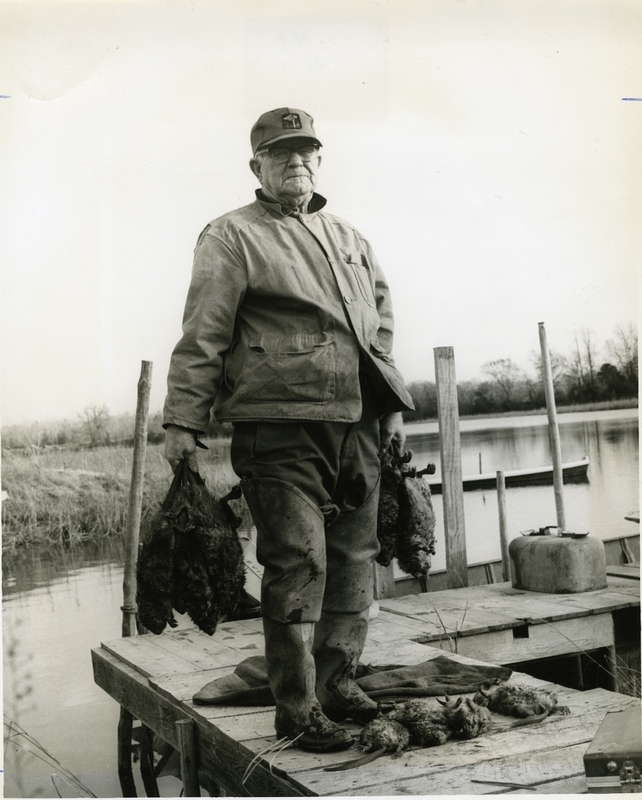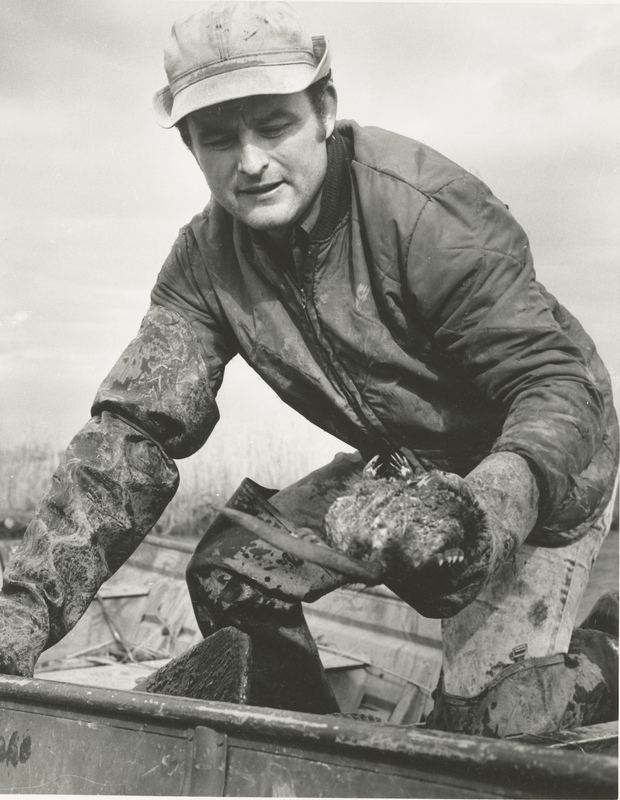Trapping Muskrats
Common to wetlands, the muskrat can be found up and down the Delmarva region. They have been trapped for their pelts but also have become a seasonal delicacy at many local restaurants. The muskrat is a rodent that is approximately 25 inches long and weighs around 3 to 4 pounds. Muskrats live in mounds throughout the marshlands in the region. They eat marsh grass, which helps with the waterways, but they also eat shellfish and frogs. From November to March, hunters place traps along the path the muskrats have created from their huts to the water.
Once trapped, the muskrats must be skinned as soon as possible, as the meat will spoil quickly. Most trappers are very skilled at skinning muskrats. The skinning process has become a popular competition at the National Outdoor Show in Golden Hill, Maryland (Dorchester County). The men’s hall of fame world champion muskrat skinner list goes back to 1938 with George North from Griffith’s Neck in Dorchester County.


